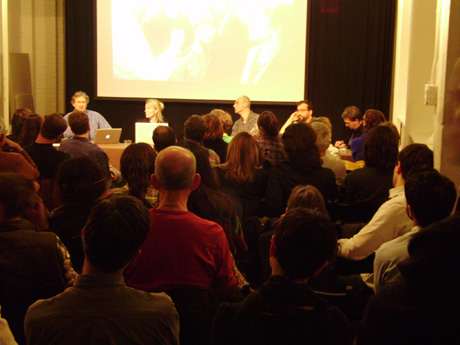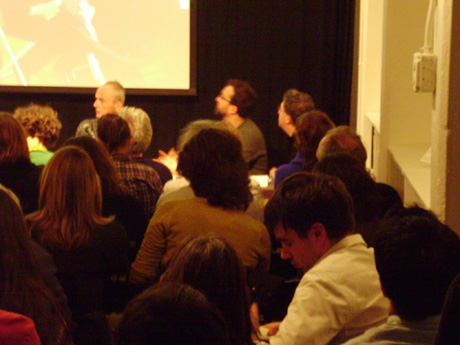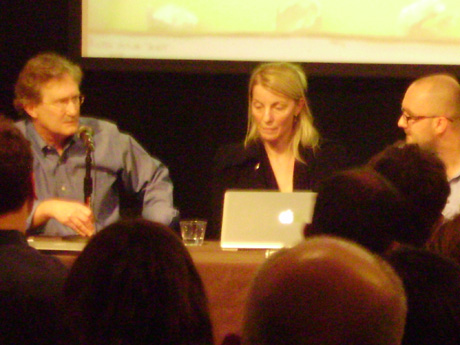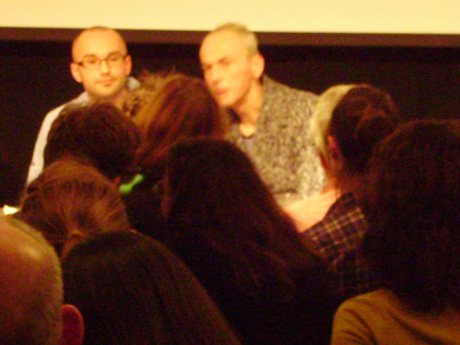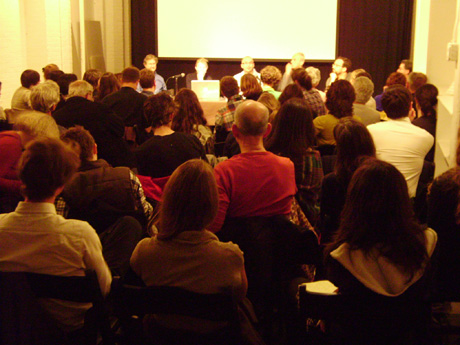Conference /
“Forensic Aesthetics”
Date: Friday, 4 November and Saturday, 5 November 2011
Location: Cabinet, 300 Nevins Street, Brooklyn (Friday); and the New School, Wollman Hall, 55 West 11th Street (enter at 66 West 12th Street), 5th floor, New York (Saturday)
FREE. No RSVP necessary
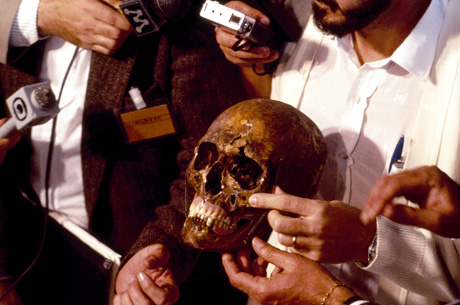
While legal and cultural scholars have labeled the third part of the twentieth century—with its particular attention to testimony—as the “era of the witness,” the emergence of forensics in legal forums and popular entertainment signifies a new attention to the communicative capacity, agency, and power of things. This material approach is evident in the ubiquitous role that science and technologies now play in shaping contemporary ways of seeing, knowing, and communicating. Today’s legal and political decisions are often based upon the capacity to display and read DNA samples, 3-D laser scans, nanotechnology, and the enhanced vision of electromagnetic microscopes and satellite surveillance. From mass graves to retinal scans, the topography of the seabed to the remnants of destroyed buildings, forensics is not only about the diagnostics, but also about the rhetoric of persuasion. The aesthetic dimension of forensics includes its means of presentation, the theatrics of its delivery, the forms of image and gesture. The forensic aesthetics of the present carries with it grave political and ethical implications, spreading its impact across socioeconomic, environmental, scientific, and cultural domains.
Etymologically, forensics refers to the “forum,” and to the practice and skill of making an argument before a professional, political, or legal gathering. Forensics has always been part of rhetoric, but its domain includes not only human speech but also that of objects. In forensic rhetoric, objects can address the forum. Because objects do not speak for themselves, there is a need for “translation” or “interpretation”—forensic rhetoric requires a person or a set of technologies to mediate between the object and the forum, to present the object, interpret it, and place it within a larger net of relations.
The lectures and roundtable discussions by the participating artists, scholars, and curators investigate these issues in a series of “forums” organized around a number of disputed objects.
Presented by Cabinet and by the Vera List Center for Art and Politics on occasion of its 2011–2013 focus theme “Thingness,” and co-sponsored and co-organized with the Forensic Architecture ERC Project at the Centre for Research Architecture, Goldsmiths, University of London, and the Human Rights Project at Bard College. Special thanks to the Open Society Foundations for their additional support.
Schedule of Panels
Friday, 4 November, at Cabinet (map)
6–8 pm: “Osteobiographies”
Saturday, 5 November, at the New School (map)
11:30 am–1 pm: “Forensic Architecture”
2–3:30 pm: “Constructed Evidence: The Thing Makes Its Forum”
4–5:30 pm: “Animism”
Panel / “Osteobiographies”
Date: Friday, 4 November 2011, 6–8 pm
Location: Cabinet, 300 Nevins Street, Brooklyn
FREE. No RSVP necessary
Participants
Eric Stover, The Human Rights Center, University of California, Berkeley
The Monument Group (Damir Arsenijevic, Branimir Stojanovic, and Milica Tomić), Belgrade
Thomas Keenan, Bard College
Eyal Weizman, Goldsmiths, University of London
“Gravediggers” have, since the middle of the 1980s, been unearthing bones and turning burial sites into an epistemic resource from which the details of war crimes can be reconstructed and brought into the pale of the law. Forensic teams, comprising archaeologists, anthropologists, pathologists, radiologists, dental experts, bio-data technicians, DNA specialists, and statisticians of all sorts, are working in international teams organized by NGOs or sponsored by the United Nations or international tribunals. Their practices mark a shift in emphasis from the living to the dead, from memory and trauma to empirical science, and from subjects to objects in accounting for atrocities. And because human remains are not simply objects, they can also blur some of the very rigid distinctions between subject and object, the living and the dead.
Panel / “Forensic Architecture”
Date: Saturday, 5 November 2011, 11:30 am–1 pm
Location: The New School, Wollman Hall, 55 West 11th Street (enter at 66 West 12th Street), 5th floor, New York
FREE. No RSVP necessary
Participants
Nikolaus Hirsch, Städelschule, Frankfurt
Eve Hinman, Hinman Consulting Engineers, New York/San Francisco
Jorge Otero-Pailos, Graduate School of Architecture, Planning and Preservation (GSAPP), Columbia University
Norman Weiss, GSAPP, Columbia University
Buildings are both sensors and agents. They materialize political and economic forces, and also the events that befall them. Buildings undergo constant formal transformations in response to forces. They expand and contract with temperature and with the slow degeneration of their component materials, registering transformation in humidity, air quality, CO2 levels, salinity, seismic movements—and sometimes also the abrupt or violent events that target them or simply happen next to them. Some of these processes can be reconstructed through structural calculations, blast analyses, and the determination of the failure points of structures, details, and forms.
Panel / “Constructed Evidence: The Thing Makes Its Forum”
Date: Saturday, 5 November 2011, 2–3:30 pm
Location: The New School, Wollman Hall, 55 West 11th Street (enter at 66 West 12th Street), 5th floor, New York
FREE. No RSVP necessary
Participants
Susan Schuppli, Goldsmiths, University of London
Amber Horning,John Jay College, New York
Sara Jordeno, artist, New York
Joanna Merwood-Salisbury, School of Constructed Environments, Parsons The New School for Design
Arne Svenson, artist, New York
What if the object is not a “witness” but an entity constructed for the express purpose of creating, or activating, the forum? Such an object might map the diffused networks of informal or illegal labor or be called upon to narrate historical events in the absence of evidentiary materials. In fact, the object may be the very thing that produces a forum where none previously existed. An artwork likewise produces its constituency; it gathers, rather than simply assumes an already extant audience. If the object, conceptualized as such, is not that which registers the events that came before it in the manner of the classical witness, then it might be said the object itself becomes the event to which the forum as witness will address itself.
Panel / “Animism”
Date: Saturday, 5 November 2011, 4–5:30 pm
Location: The New School, Wollman Hall, 55 West 11th Street (enter at 66 West 12th Street), 5th floor, New York
FREE. No RSVP necessary
Participants
Anselm Franke, curator, Berlin
Brigid Doherty, Princeton University
Spyros Papapetros, Princeton University
Hugh Raffles, The New School for Social Research
In the habituated scheme of modernity, objects are conceived as the passive stuff on which human action leaves its imprint or trace. Whenever this passive/active nexus between objects and subject, humans and the non-human is disturbed or even reversed—as in the coming-to-life of seemingly dead matter, the becoming autonomous of inert things—we inevitably step into the territory of animism: that non-modern worldview that conceives of things as animated and possessing agency. With regards to forensic aesthetics, the historical discourse of animism provides a foil for a reflection on the boundaries at stake. This session examines a series of objects and liminal cases in which those borders are being destabilized or transgressed, from the crystal ball to educational objects from the 1920s, from hair to rocks.
